
|
|
SUBSIM: The Web's #1 resource for all submarine & naval simulations since 1997
 |
SUBSIM: The Web's #1 resource for all submarine & naval simulations since 1997 |
 09-05-13, 05:35 PM
09-05-13, 05:35 PM
|
#226 |
|
Eternal Patrol
 |
Project underway. I decided to use some Eduard E.III kits I recently purchased rather than the Revell kits, mainly because the Revell kit has the wing fit into a slot in the engine fairing and the Eduard has the wing taper around the fairing. If I used the Revell fairings I'd have to fill in the slots and sand them smooth. With the Eduard kits that's one step I can skip.
Two fuselages with floorboards assembled, one of them has the rear seat lot cut out. 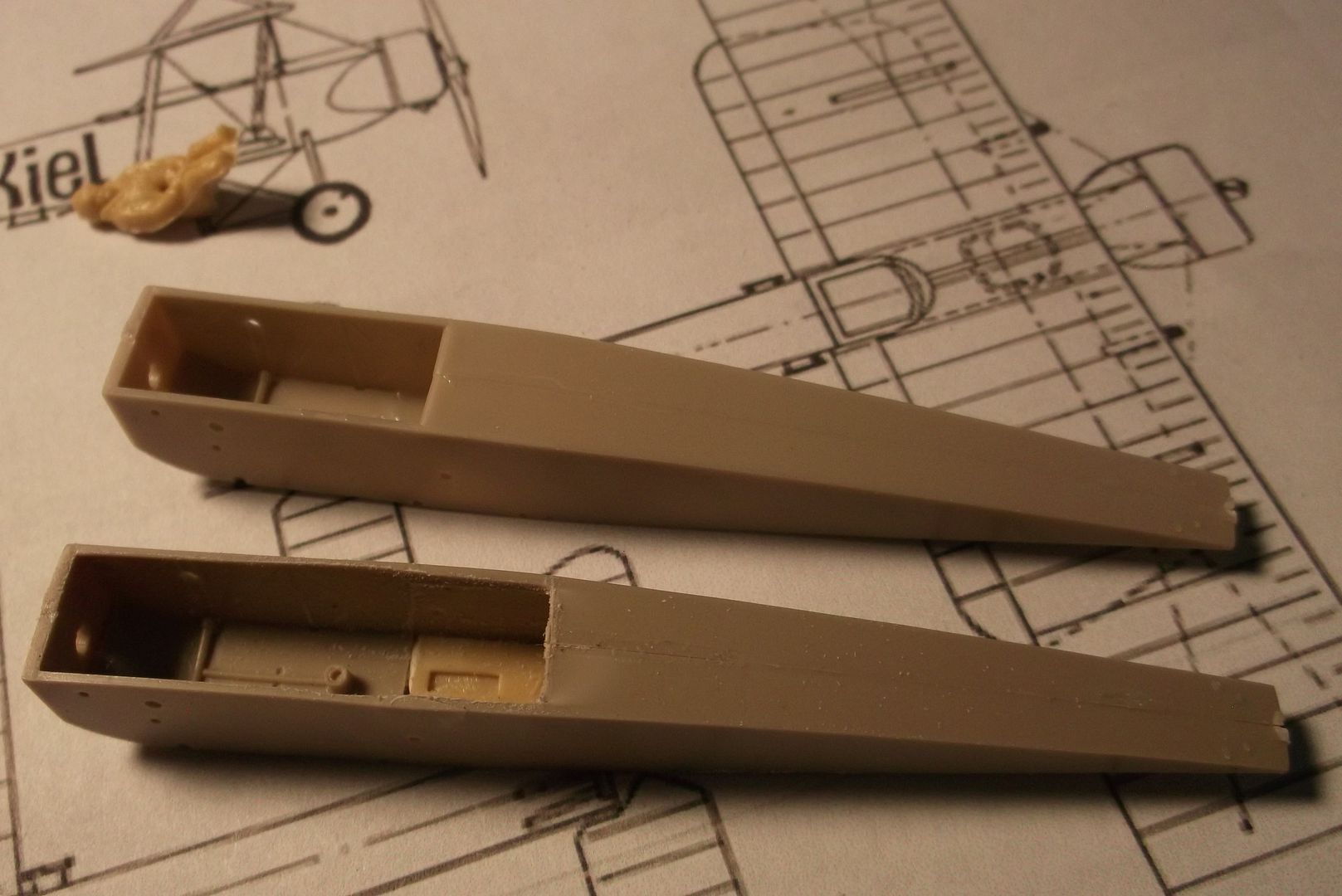
__________________
“Never do anything you can't take back.” —Rocky Russo |

|

|
 09-08-13, 09:14 PM
09-08-13, 09:14 PM
|
#227 |
|
Eternal Patrol
 |
Three days later. Fuselages assembled, lower wings and tail assemblies attached, upper wings assembled and all primered. The long upper wings and lower wing on the B.II required some cutting and gluing of eindekker wings, and it's nearly impossible to get them perfect, so there's going to be a bit of puttying and sanding before they're ready. Still, some progress has been made.
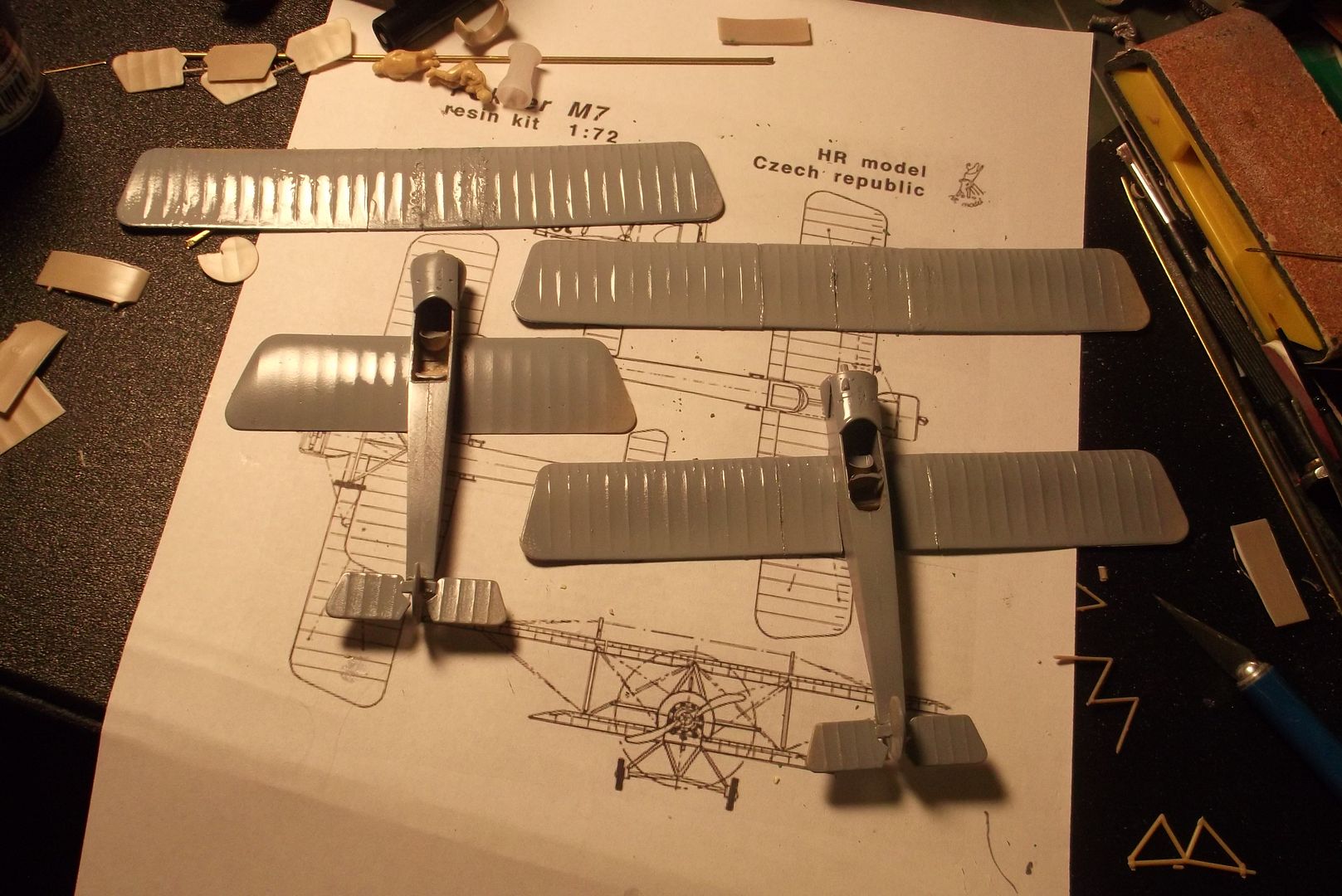
__________________
“Never do anything you can't take back.” —Rocky Russo |

|

|
 09-09-13, 04:21 AM
09-09-13, 04:21 AM
|
#228 |
|
Chief of the Boat
|
^ That helps me better understand what you were explaining on Skype yesterday
 Nice work. |

|

|
 09-17-13, 02:59 PM
09-17-13, 02:59 PM
|
#229 |
|
Eternal Patrol
 |
After nine days of puttying and sanding over and over again, I finally have the wings to a level I can accept. Landing gear and cabane assemblies are installed and both were given a coat of CDL (Clear Doped Linen). I think I'm ready to put them both together.
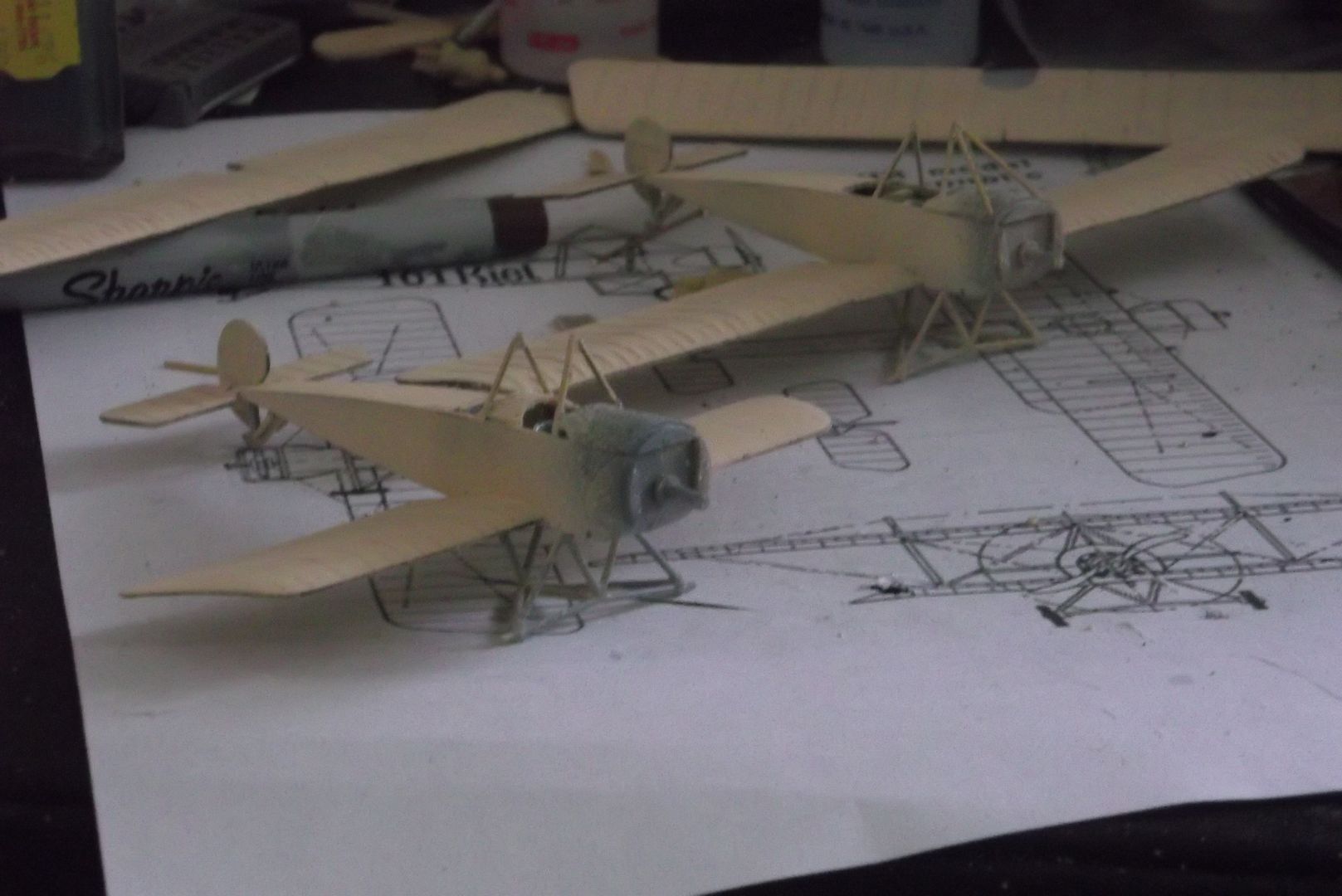
__________________
“Never do anything you can't take back.” —Rocky Russo |

|

|
 09-19-13, 02:11 PM
09-19-13, 02:11 PM
|
#230 |
|
Eternal Patrol
 |
After careful examination of the drawings I realized the cockpit cutouts were too short. After lengthening the rear cockpit of both planes I had to relocate the deck between the pilot and observer and relocate the rear cabanes. I finally got the pilots and engines painted and installed and the forward metal panels and cowlings painted.
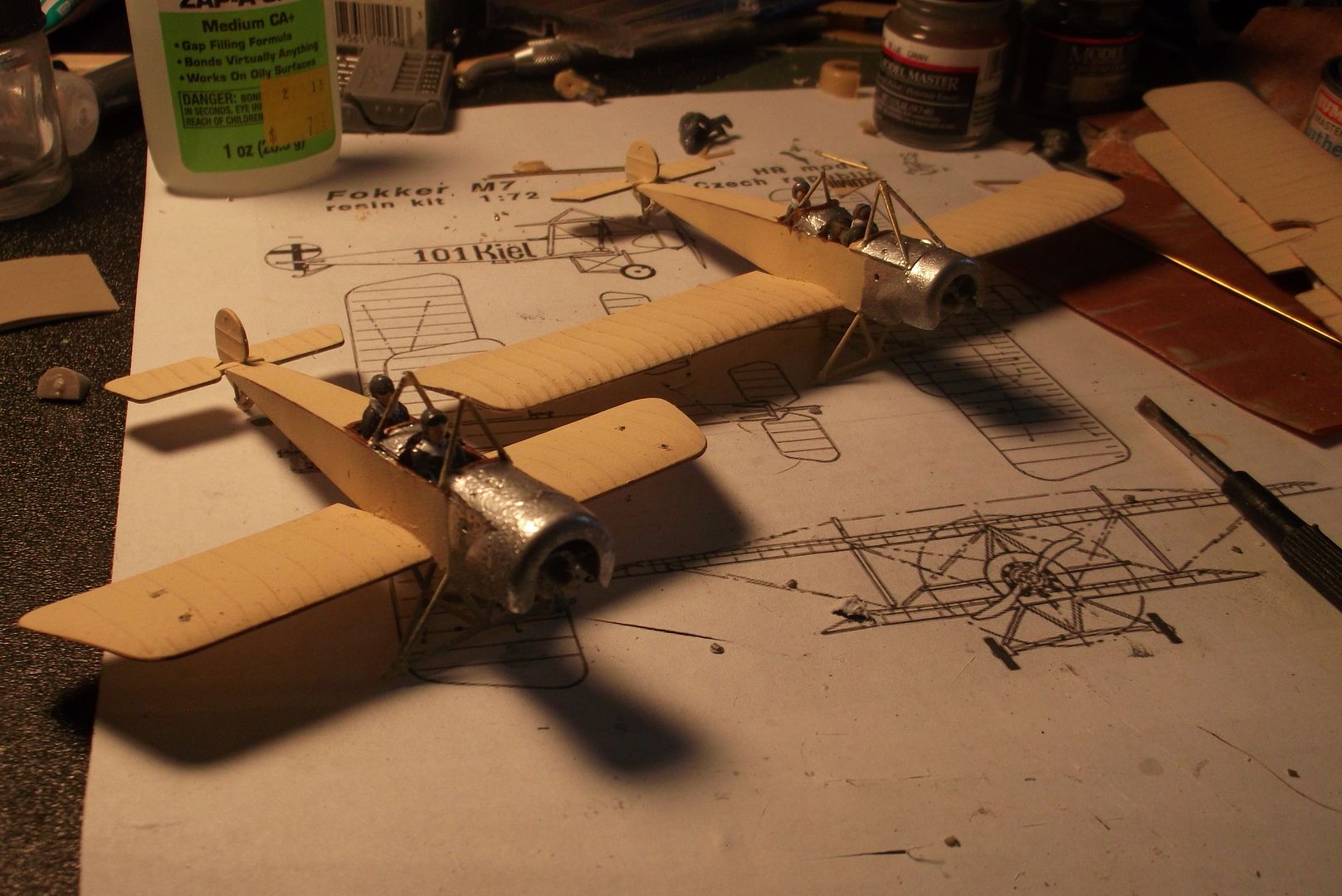
__________________
“Never do anything you can't take back.” —Rocky Russo |

|

|
 09-22-13, 06:06 PM
09-22-13, 06:06 PM
|
#231 |
|
Eternal Patrol
 |
After a whole lot of fussing, fidgiting, fiddling and fighting I finally got the upper wings mounted.
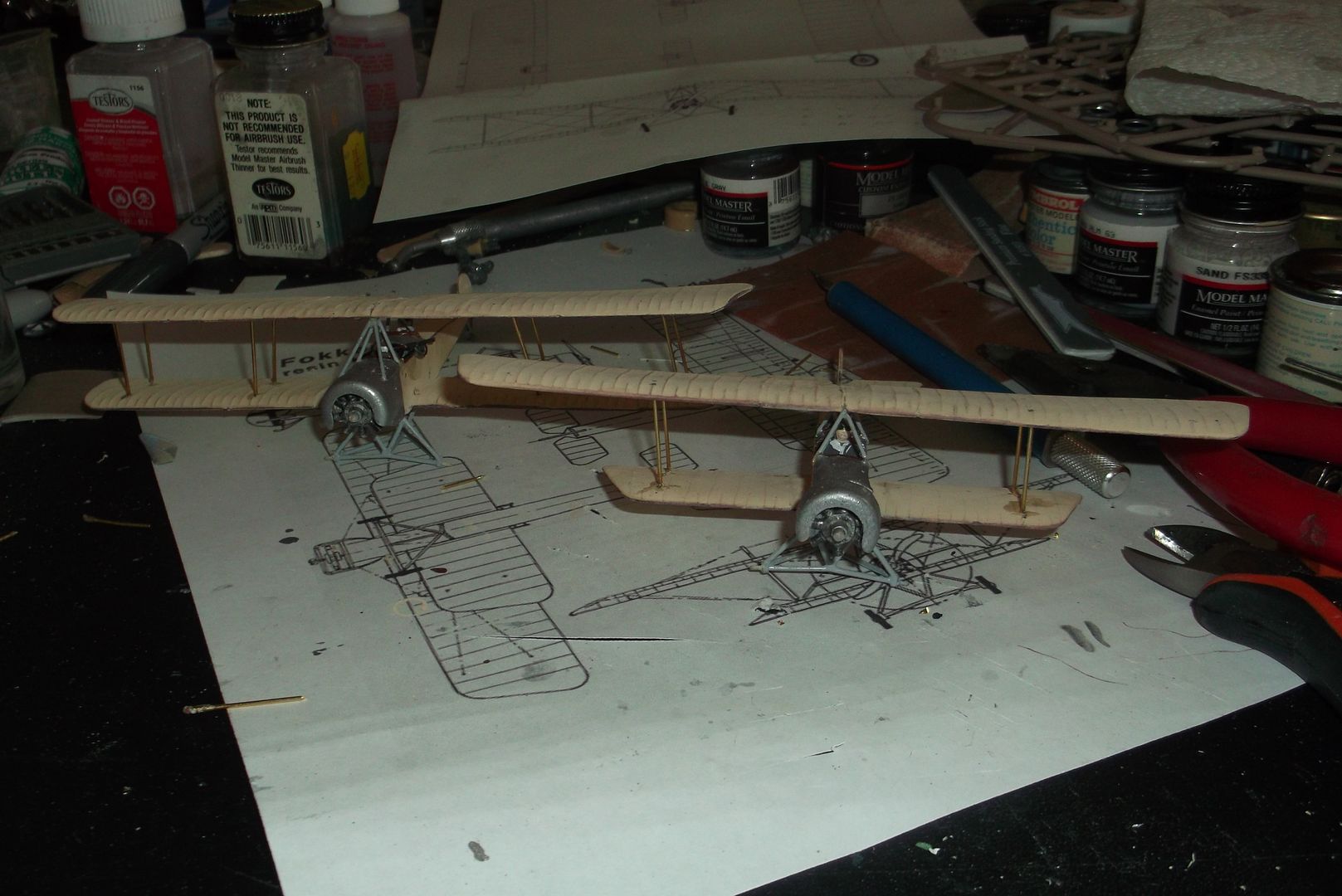
__________________
“Never do anything you can't take back.” —Rocky Russo |

|

|
 09-25-13, 09:55 PM
09-25-13, 09:55 PM
|
#232 |
|
Eternal Patrol
 |
Well, they Fokker twins are done. Both are in early Austro-Hungarian markings, because they seem to have had the most of them, and because the German markings of the period are even more boring.
They both have very unusual rigging. Most biplanes have bracing wires from the fuselage to the inner struts, then to the outer struts if it's a two-bay. There are wires connecting the front and rear struts, making an 'X' between them. For whatever reasons they may have had, the Fokker B-Types had the front struts braced normally, but the rear struts had one wire from the fuselage to each strut, and nothing connecting the struts, either along the wing or fore-and-aft. First up is the B.I, with its 7-cylinder 80-horsepower engine. 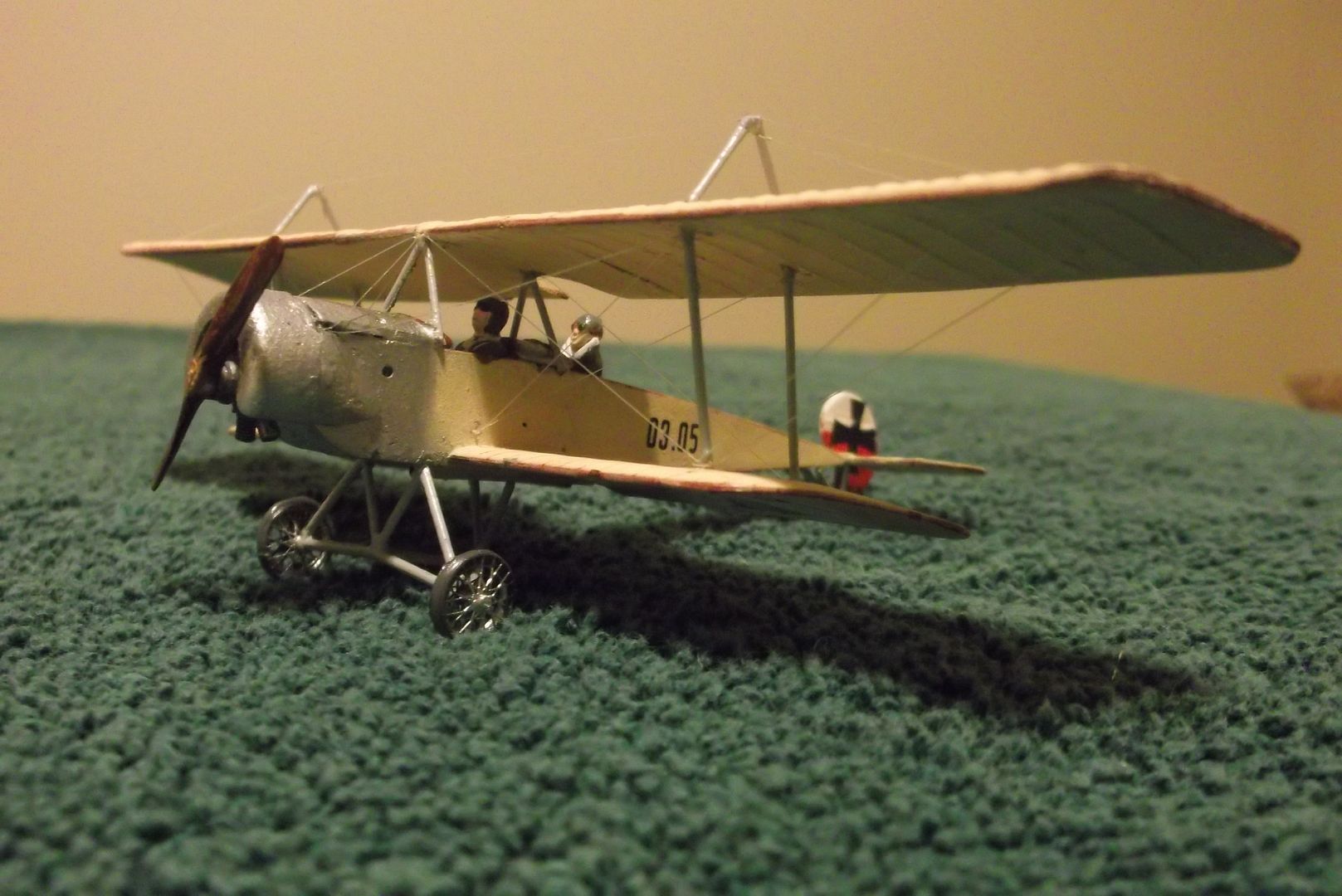 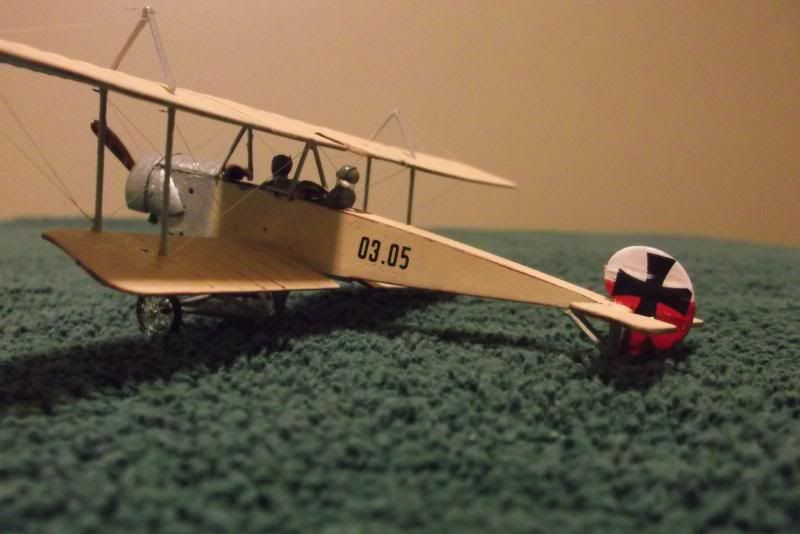 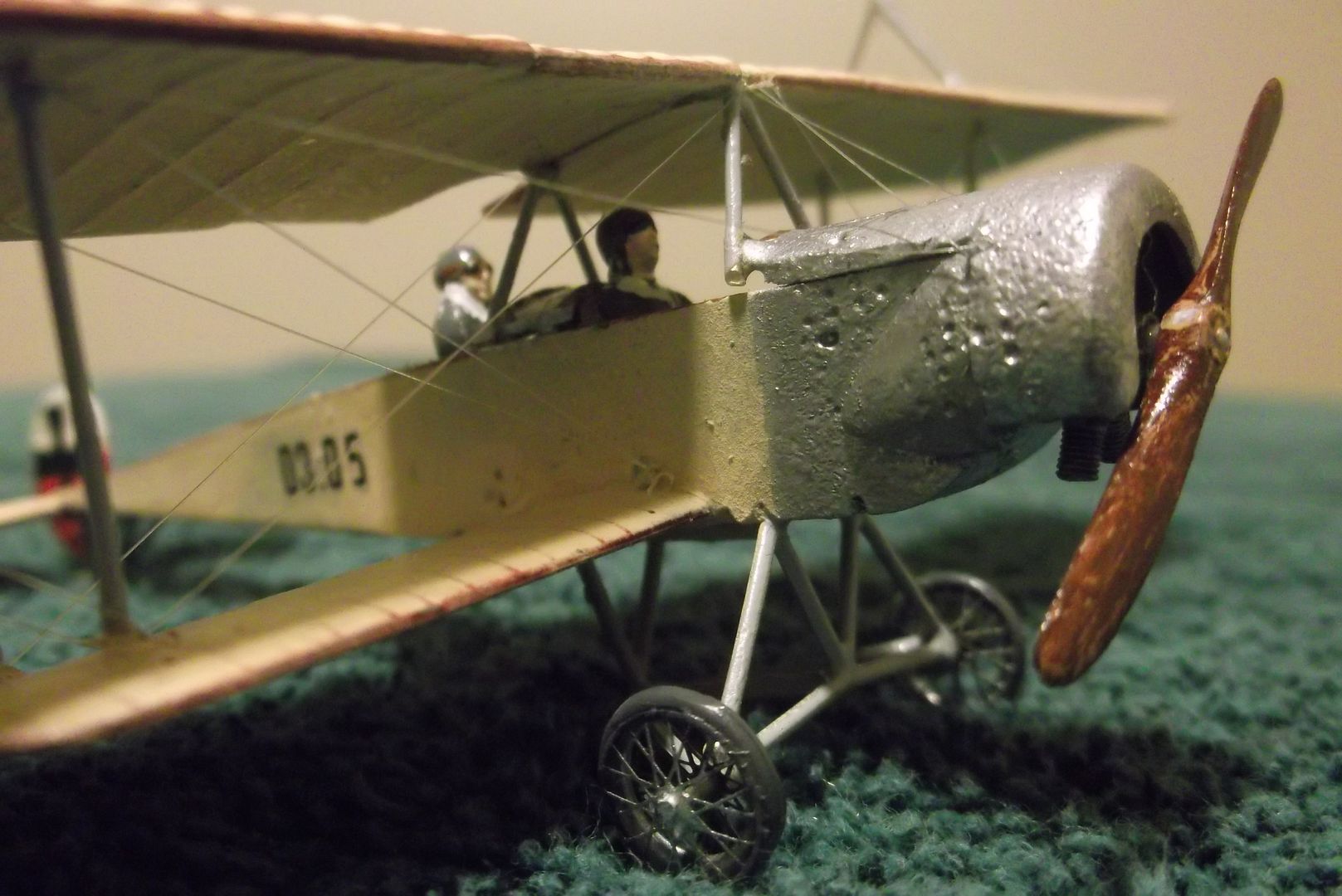 Then is B.II, with a 9-cylinder 100-hp engine and double-bay wings.  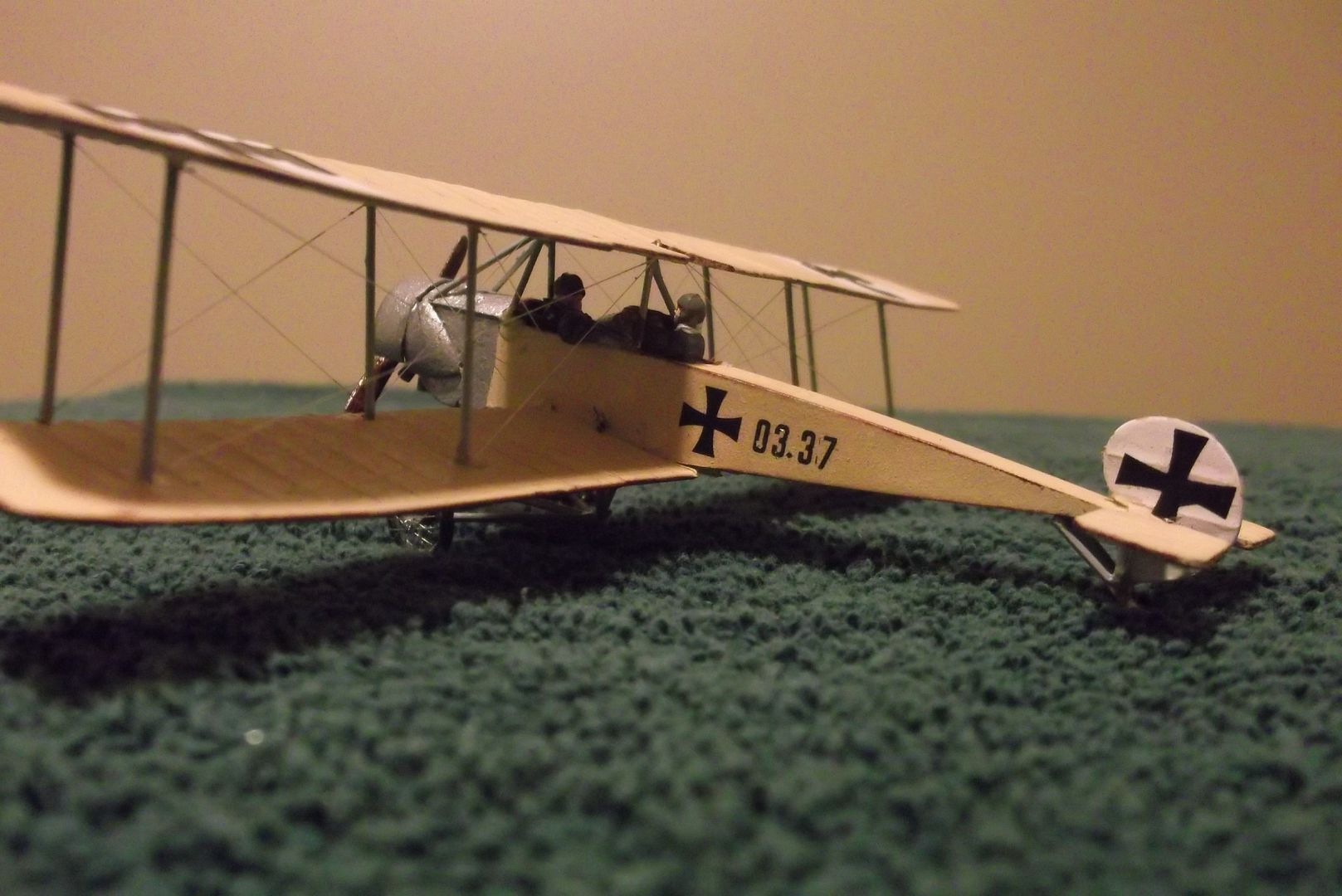 One of the characteristics of German B-Type unarmed two-seaters was that the observer was in the front cockpit and the pilot in the rear. When fighters became a danger and they started arming them, they left the arrangement alone, so they had to mount a machine gun in the front cockpit. This was done by putting a rail on each side of the cockpit. The observer could shoot aft or forward to one side or the other, with a steel bar keeping him from shooting either the propeller or the pilot. If he wanted to shoot to the other side he had to lift the gun off of the mounting bracket and fit it into the one on the opposite rail. Some crews tried carrying two guns, but this cause too much loss of performance. B.II machine gun. 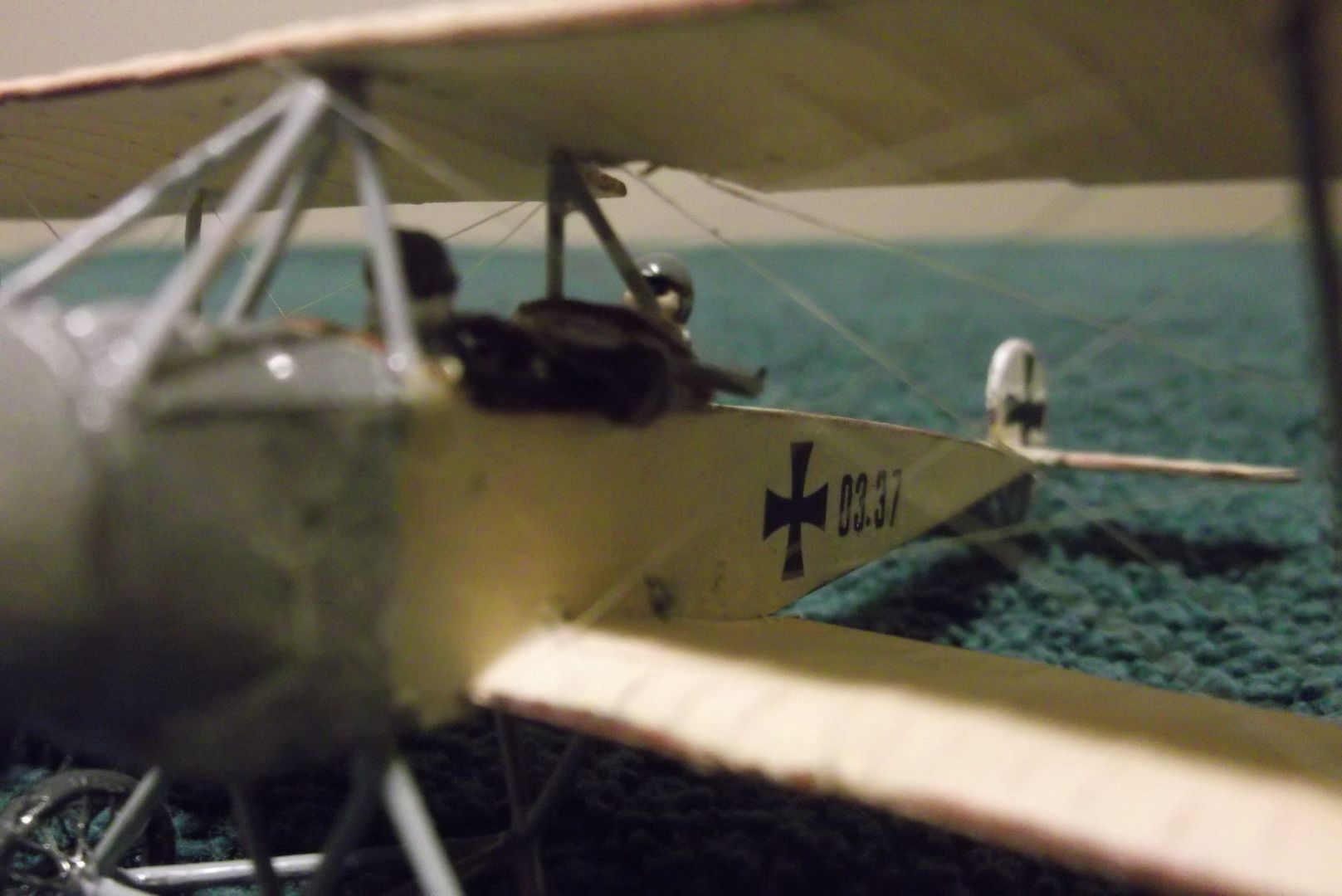 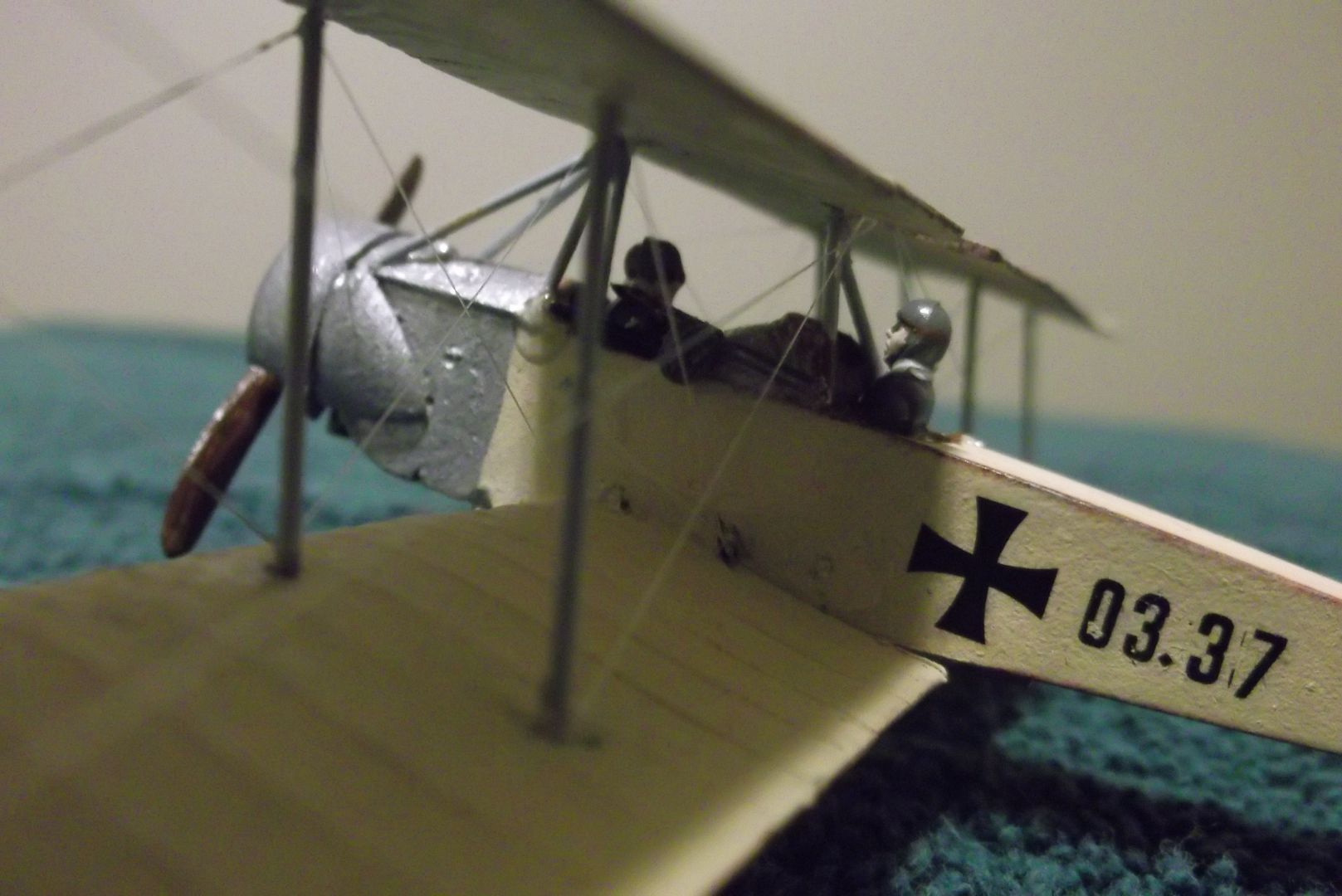 Both planes together, just for comparison. 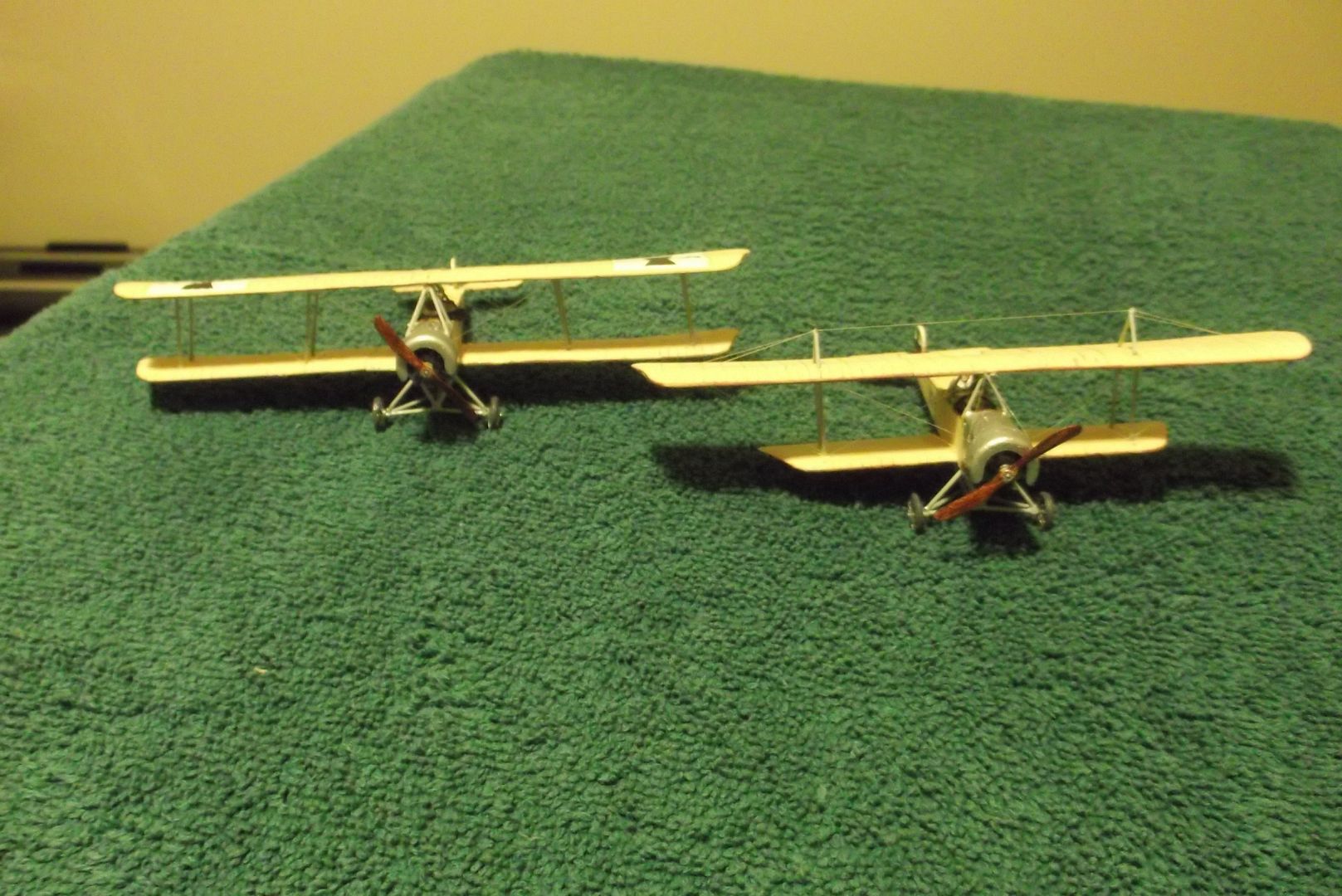 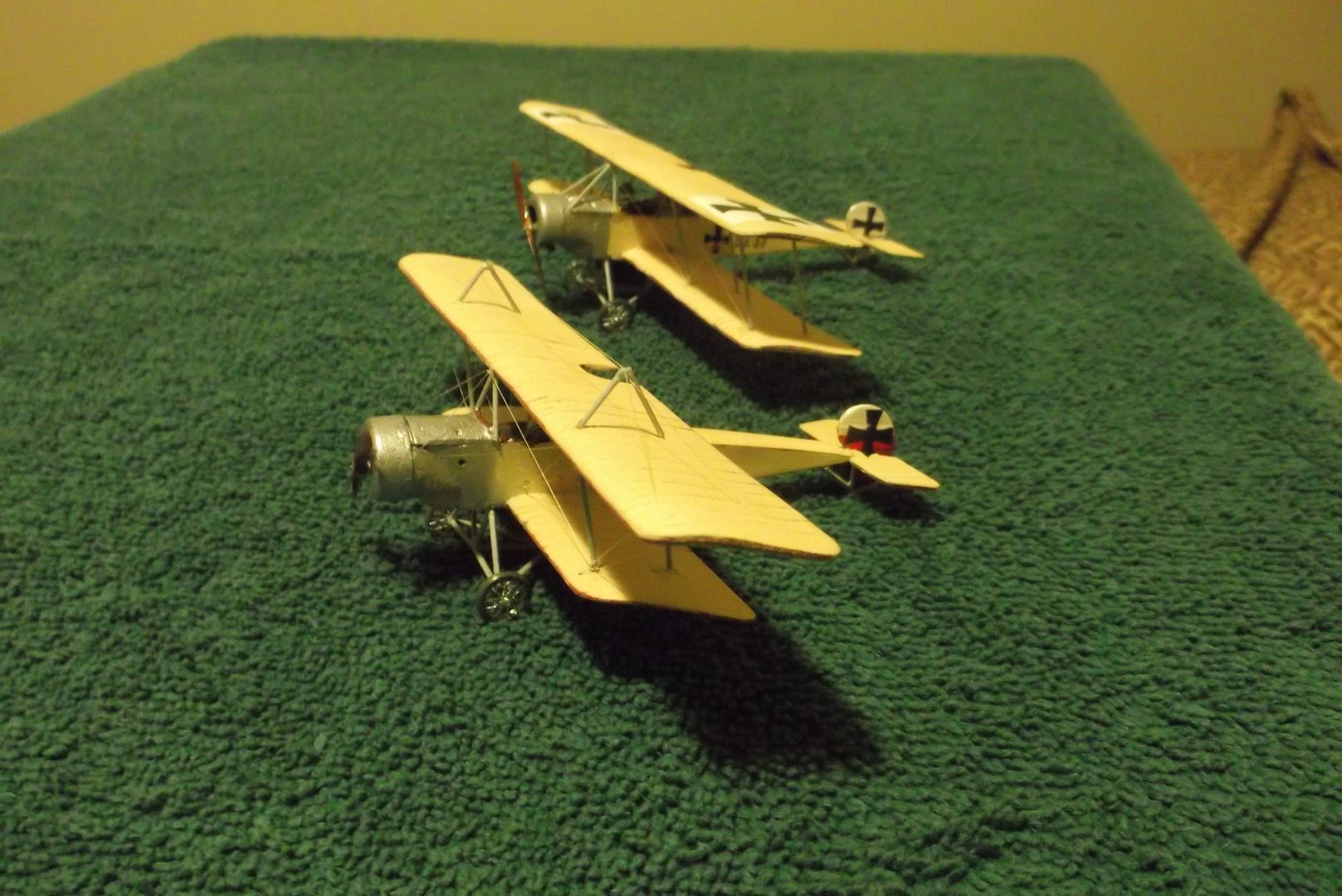 Yes, the front view shows the unusual strut mountings of some German biplanes. The struts do not run straight up and down, but slope inward slightly.
__________________
“Never do anything you can't take back.” —Rocky Russo |

|

|
 09-25-13, 11:45 PM
09-25-13, 11:45 PM
|
#233 |
|
Shark above Space Chicken
|
Those look great Steve. I imagine the odd bracing was in part due to the wing warping method for roll control, or did these employ actual ailerons?
__________________
 "However vast the darkness, we must provide our own light." Stanley Kubrick "Tomorrow belongs to those who can hear it coming." David Bowie |

|

|
 09-26-13, 05:02 AM
09-26-13, 05:02 AM
|
#234 |
|
Chief of the Boat
|
A fine looking pair Steve...I should be on Skype this afternoon
|

|

|
 09-26-13, 09:48 AM
09-26-13, 09:48 AM
|
#235 | ||
|
Eternal Patrol
 |
One of the things I forgot to mention is that I didn't have a seven-cylinder engine to put in the B.I. I took a nine-cylinder and cut off eight of them, then glued six back on, using a front-view drawing as a guide.
All that and you can't really see them anyway.  Quote:
Quote:
I was thinking that I'll be going gaming this afternoon. Then I remembered it's afternoon where you are now. I'm obviously online now. 
__________________
“Never do anything you can't take back.” —Rocky Russo |
||

|

|
 09-26-13, 02:42 PM
09-26-13, 02:42 PM
|
#236 |
|
Chief of the Boat
|
I would never have realised had we not been talking as I was typing this

|

|

|
 09-26-13, 06:28 PM
09-26-13, 06:28 PM
|
#237 |
|
Old enough to know better
|
Very cool Steve and very good photos.

__________________
“Two possibilities exist: either we are alone in the Universe or we are not. Both are equally terrifying.” ― Arthur C. Clarke 
|

|

|
 09-29-13, 06:58 PM
09-29-13, 06:58 PM
|
#238 |
|
Eternal Patrol
 |
And my next project is...
DONE! When I first set out repairing broken models I only rigged the ones I had repaired. Now I'm taking things in order as they come on our game generators, and the next one up is a Royal Aircraft Factory Be.2c. I built it more than twenty years ago, and it shows, but I'm not going to strip it down and rebuild it from scratch. I did add skids to the landing gear to represent an earlier model, but beyond that I left it alone except for rigging. Therefore the occasional glue spot shows where it's been repaired more than once. The Be.2 was an early design meant just for reconnaissance and training, and it was designed to be very stable and gentle to fly. Once it got into a situation where maneuverability was required, it was found to have none. This made it an easy target for the first Fokker fighters. One other historical note: Since it represents a pre-war aircraft hastily adapted for The Front, the markings are a bit odd. It was the Germans who first realized that if they put a large cross on the bottom of each wing their ground gunners would know not to shoot at them. The French thought this was a brilliant idea, and quickly followed suit with cockades (roundels) on the bottom wings. The British also thought this was smart, and put Union Flags on their bottom wings. They then found to their chagrin that while a red, white and blue Union Flag looked great close up, at 1000 feet in the air it looked like a large black and white cross, and Allied troops would shoot at them. The flags were painted on and couldn't be scraped off. Removing them would require re-covering the whole aircraft. The solution was to paint roundels wherever possible, so the troops would recognize them for what they were. So here is my very old Be.2c, finally finished and rigged.  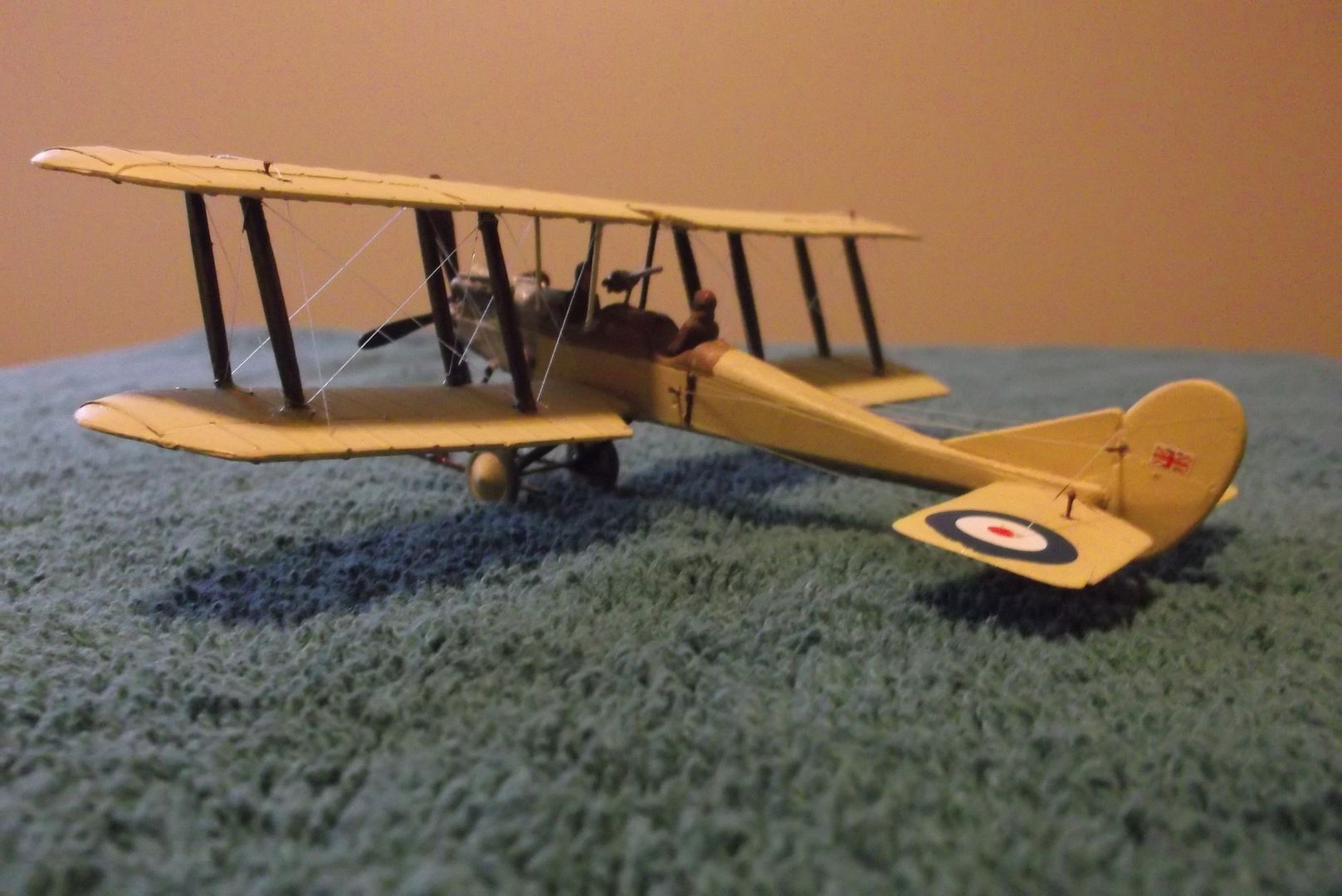 Just for Aktungbby: You made a comment earlier about not having a camera, and I mentioned that I had done it before and didn't have one to put on the Aviatik. Well, this was the one that I had done so long ago, and rigged it with the only scale camera I had at the time. 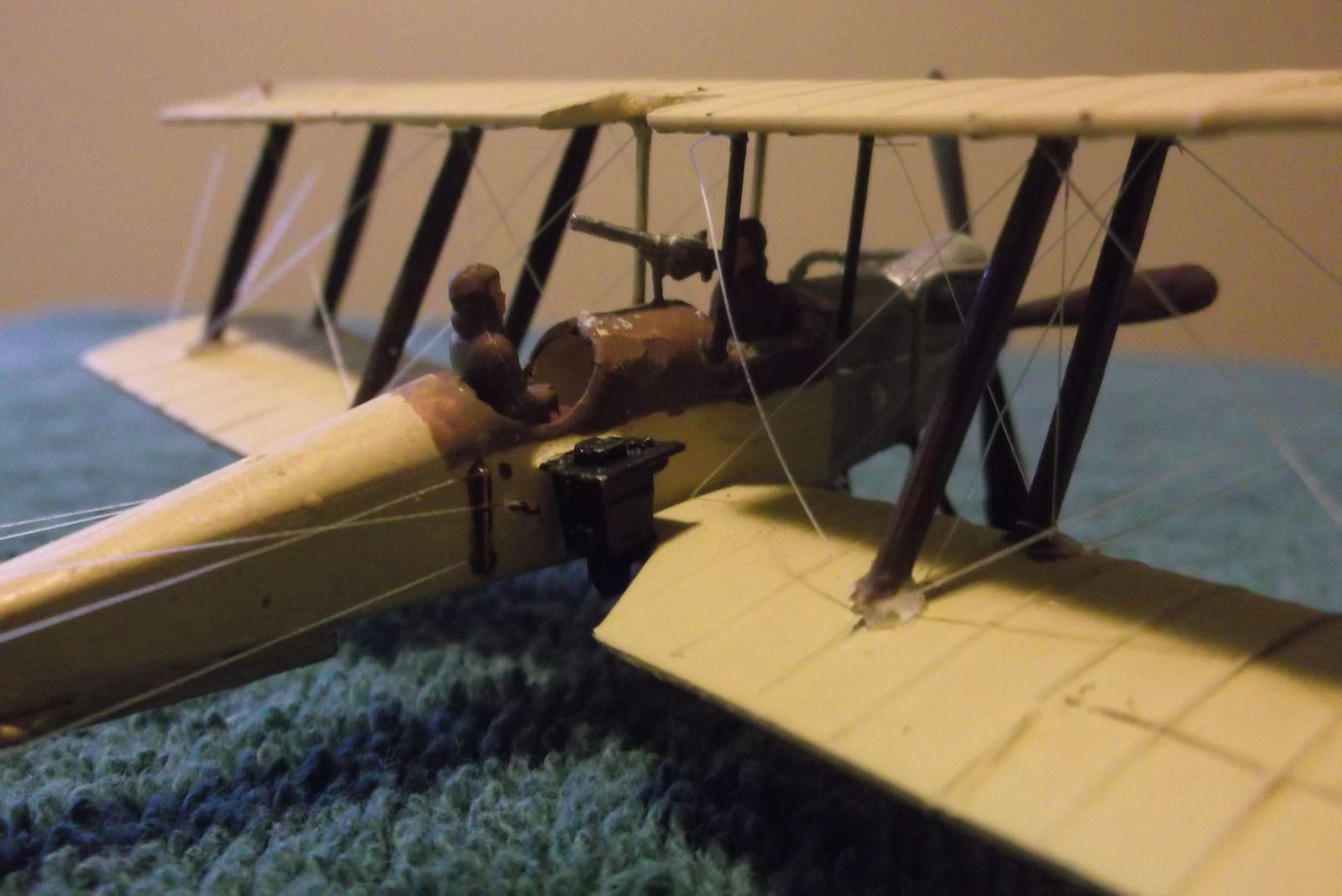 Finally, here are the Union flags, and the roundels on the stabilizers. 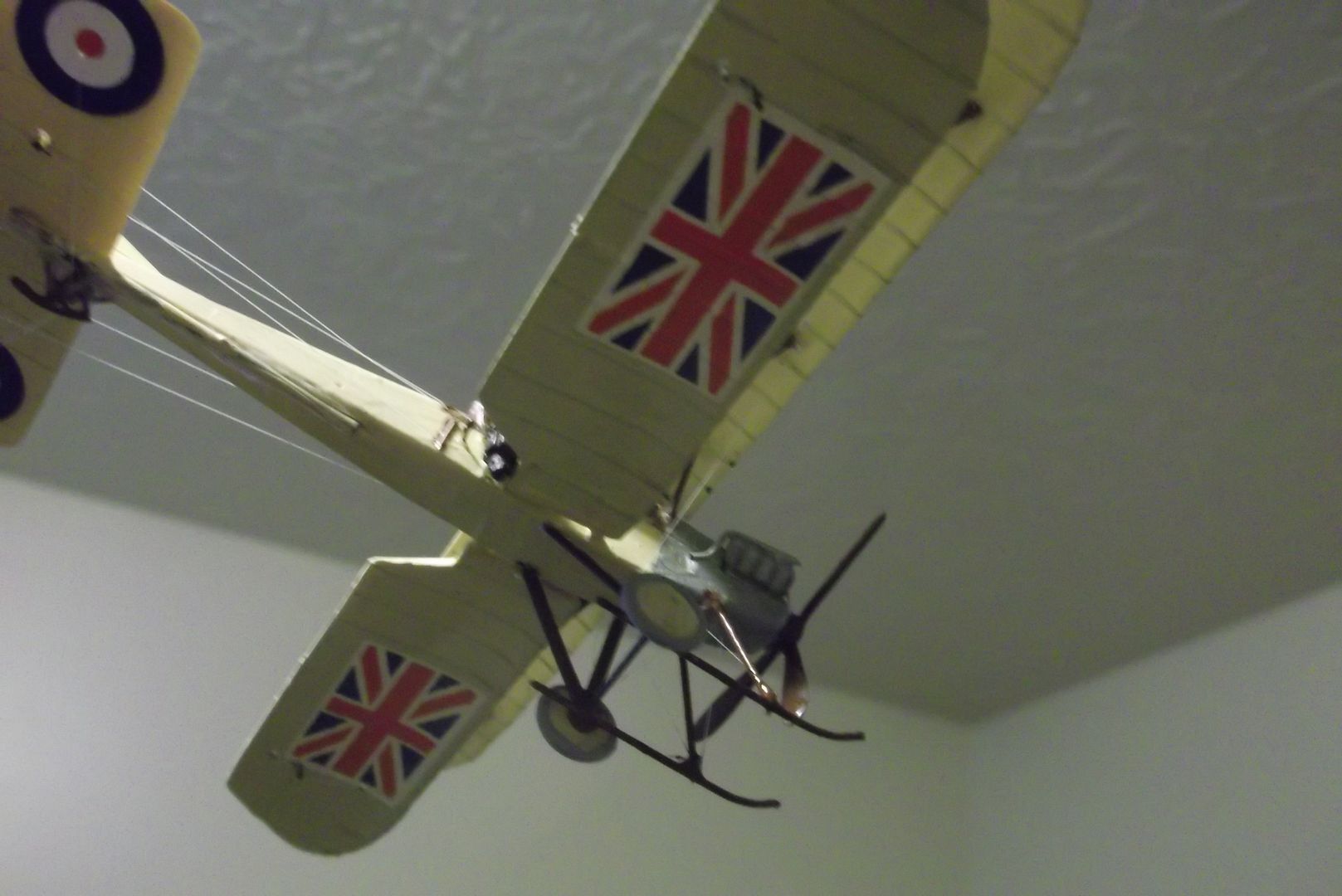 Oh, I also had a proud moment while gaming three nights ago. One of my fellow history buffs and gamers commented on the side-mounted gun on the Fokker B.II without me pointing it out first, and said he thought it was cool.
__________________
“Never do anything you can't take back.” —Rocky Russo Last edited by Sailor Steve; 09-29-13 at 09:09 PM. |

|

|
 09-30-13, 03:00 AM
09-30-13, 03:00 AM
|
#239 |
|
Chief of the Boat
|
Very nice
|

|

|
 09-30-13, 01:32 PM
09-30-13, 01:32 PM
|
#240 |
|
Eternal Patrol
 |
My next project is going to be another pair, this time two different versions of the Hansa-Brandenburg C.I. The plane was Austria's first armed two-seater, designed an built specifically to carry a defensive gun. It was designed by a young engineer named Ernst Heinkel, who would gain fame between the wars and in World War Two with his own company. The original design moved the observer to the rear seat and supplied him with a ring-mounted Schwarzlose machine gun. Hansa-Brandenburg only built 84 of them, but they were licensed out and Phönix built around 400 while UFAG (Ungarische Flugzeugfabrik Alles Gesellschaft, or Hungarian Aircraft Public Company) built more than 800. Phönix and UFAG both experimented with giving the observer a better field of fire by placing him and his gun on a tower. While this worked as far as shooting went, it made the plane less stable and stopped communication between pilot and observer. Since in German and Austrian practice the observer was the officer, and thus aircraft commander, it made it difficult for him to tell the pilot where to point the plane. Ultimately they supplied a second gun for the pilot to shoot, mounted above the wing in a streamline pod sometimes referred to as a "baby coffin". For some reason the version with the tower has come to be known as "Hansa-Brandenburg C.I UFAG", which leads some people to ask "What's an UFAG?"
This is what I'm facing: 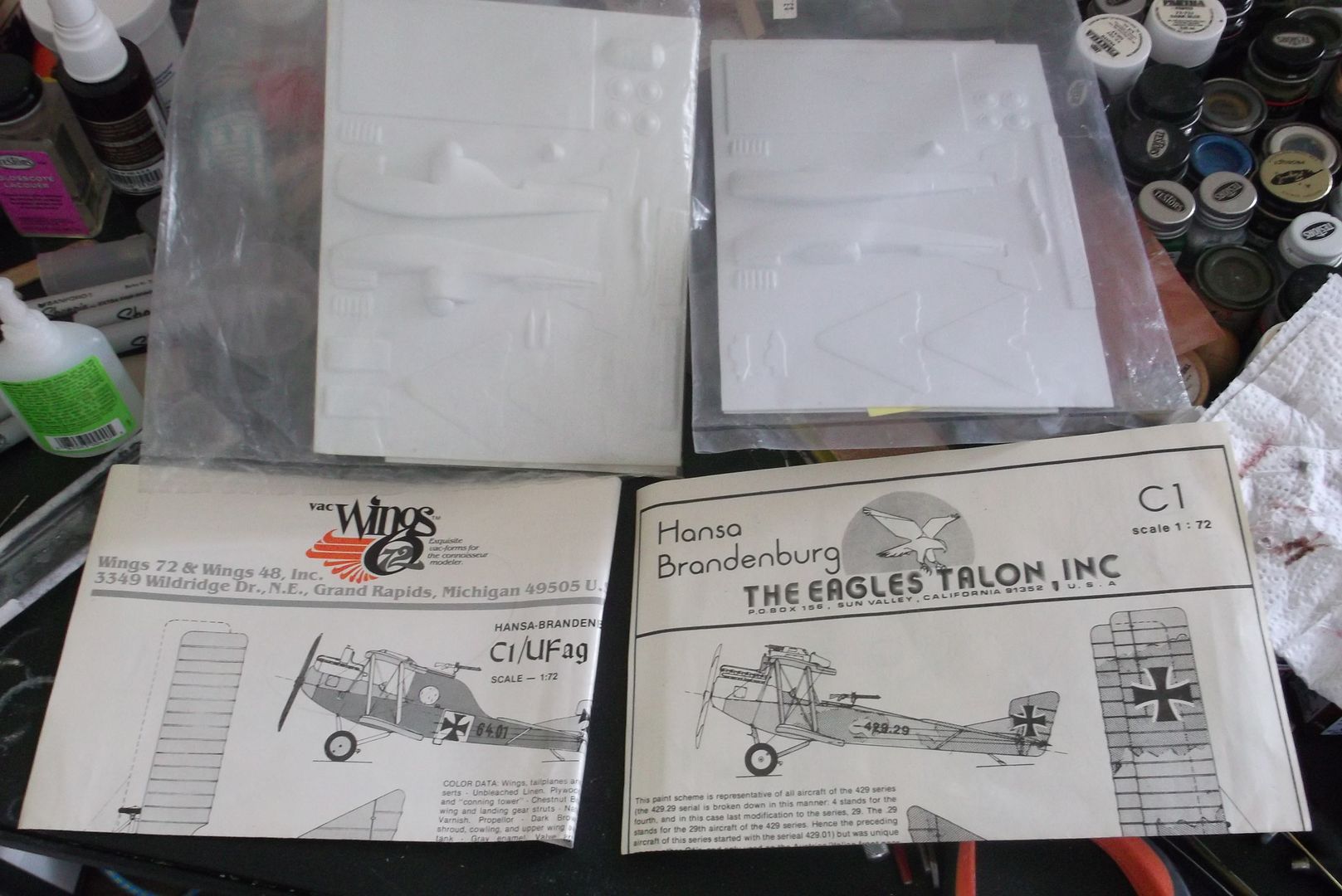
__________________
“Never do anything you can't take back.” —Rocky Russo |

|

|
 |
| Tags |
| model |
|
|
